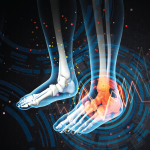NEW YORK (Reuters Health)—A large epidemiological study provides more evidence of a link between tumor necrosis factor inhibitors (TNFi) and peripheral neuropathy (PN).
“These events are rare and the benefit of these drugs still outweigh this risk so this should not change practice,” cautions first author Dr. Mahyar Etminan from the University of British Columbia in Vancouver, Canada.
“However, clinicians should let patients know what the symptoms of PN are and ask patients to notify their physician in case they happen,” he tells Reuters Health by email.
Using the PharMetrics Plus health claims database, the researchers created a cohort of more than 61,000 patients with rheumatic diseases—64.7% with rheumatoid arthritis, 27.4% psoriasis and 7.8% ankylosing spondylitis. Among this cohort, there were 1,358 incident cases of PN and each case patient was matched to 10 controls.
Recent users of TNFi had an adjusted rate ratio (RR) of PN of 1.14 (95% confidence interval [CI], 0.90 to 1.43). The RR for past use of TNFi was 2.77 (95% CI, 1.67 to 4.58) and 2.90 (95% CI, 1.4 to 6.30) for past users with three or more TNFi prescriptions.
“The risk of PN with TNFi use was elevated compared to patients not taking any drug therapies or those with more severe disease as measured by use of methotrexate and disease-modifying anti-rheumatic drug (DMARD) use,” the researchers note in Seminars in Arthritis & Rheumatism, online Sept. 27.1
Dr. Etminan noted that a number of case reports have linked TNFi to PN in patients with rheumatic diseases, but “case reports can only generate a hypothesis and can’t really tell us if there is any association or causal link.”
“The major challenge,” he adds, “is that the conditions for which these drugs are used to treat, like rheumatic diseases, on their own can also cause PN so the only way to answer this question is to do a large epidemiologic study that can compare users of TNFi to those having rheumatic diseases but are taking a different drug class. This is the first epidemiologic study on this question and we did observe an increase in risk.”
The researchers say future studies are needed to “confirm these results and examine the type of PN that may incur as a result of TNFi use through active surveillance programs. In the meantime, clinicians should be aware of this adverse event especially in patient with previous history of PN,” they conclude.



